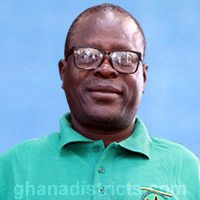Goals And Objectives
Municipal Development Goal And Objectives
This section of the report looks at the development framework for the Sissala east Municipal it between 2006 and 2009. It therefore looks at the main focus of development goals, objectives and strategies for solving the identified development problems/issues.
Development Focus
Resulting form the review of the previous MTDP, the development focus of the current DMTDP (2005-2009) is to sustain growth, poverty reduction and gender equity through good governance and provision of basic socio economic facilities. The foregoing focus of development forms the basis for the generation of development goals, objective and strategies which are directed at achieving the broad development focus. These have however been grouped under the main development themes under the GPRS II.
Development Projections 2006 - 2009
Planning process is futuristic and aims at reducing uncertainties. As a result various projections are made over the plan period to give an indication of what is expected in the future. This sector therefore presents the projections of the districts population and infrastructural needs. Again, expected agricultural production levels over the plan period have also been captured under this section.
Population projection
Population has been identified as both determinant and consequence of development and as a result must be considered central to any development planning activity. In view of this, the district population has been projected to assess the basic demographic characteristics of the district expected over the next three years. (2006-2009).The population projection has also been computed to estimate the social, technical, and economic infrastructural needs over the plan period.
The current population projection is based on the estimated district population compiled in 2004 by the district administration. This base population as has already been indicated is 49499 with annual growth rte of 1.7%. Out of this figure, the male and female proportions are 49% and 51% respectively.
The total number of households in the district is 6487 with an average household size of 7.6 people. In the projections of the district population the major issues considered are fertility, mortality and migration rates. Consideration was also given to expected increase in the districts economic activities. Based on the foregoing, some assumptions have been madeas basis for the population projection. These have been captured below;
Assumptions
The following assumptions have been made about the districts population over the plan period spanning 2006-2009.
- The current estimated population growth rate of 1.7% per annum will remain constant over the plan period.
- The total fertility rate of 3.4% per women of the Sissala district (2000) will not change
- The survival rate of 77.7% (2000) for the Sissala district will increase gradually to 80% over the plan period.
- Average infant mortality rates of 22.3% will decrease to 20%.
- ln-migration of Fulani herdsmen will be checked over the plan period.
- General migration in and out of the district will be insignificant.
- There will not be the up serge of any major economic activity such as mining/large industrial activity
- The outbreak of an epidemics is expected over the plan period
- The district population will grow geometrically over the plan period spanning 2006-2009
- Male and female proportions of the districts population will remain constant over the plan period.
- The population proportion of individual settlement will not change.
Population Projection for first ten settlements
The estimated population of 2004 indicates that 51% of the districts populations are concentrated in the first ten settlements. Assuming that this proportion will not change over the plan period, the demographic patterns of the first ten settlement of the Sissala East-district over the plan period have been presented in table 3.2
The table indicates the continuous primary of Tumu, the district capital. This is due to its strategic location and its function as an administrative and socio-economic hub of the district. Again Tumu tends to receive more travellers on transit from Wa to the Upper east region and vice versa as well as those entering the country from Burkina Faso
Projection of Water needs
Water is a basic necessity of life and must therefore be supplied in the right quantities and quality for the benefit of all people. Over the plan period therefore, the Sissala East District assembly aims at expanding the current coverage of water supply in the district. Following from the foregoing objective the estimation of water needs over the plan period vis-a-vis the existing potable water points have been captured in Table 3.3. The estimation has been done on the basis of the projected district population.
With the current population of 51,182, the district needs a total of 171 potable water sources (i.e. 300 people/water source). With the existing number of boreholes standing at 88, with an average additional needs of 3 potable water sources (borehole) per year. The total need over the plan period is 92 (see Table 3.3).These water needs require huge investments from all development stakeholders within the district. Frantic efforts should therefore be made to design action programs and/or projects to address this growing water demand.
Projection for sanitation facilities
The main sanitation facilities considered are toilets. Projects under these facilities have been grouped into two; community level and household level and household toilet facilities. The estimated needs for community toilet facilities have been captured in Table Projection for community toilet facilities was also based on the projected population, with the assumptions that a population of 300 people is entitled to a community toilet facility. With 31 community facilities currently available, the district will need 149 over the plan
period.
Estimation of Household Latrines
In the case of household facilities, there are currently 124 facilities in the district. With the assumption that each household must have a toilet facility, 7567 facilities will be needed over the period between 2006 and 2009(See Table 3.5). This figures should however be adjusted to suite the situation on the ground since some household will be sharing facilities.
On the other hand, with the assumption that each housing unit should have a household toilet facility, the total number needed over the plan period is 4,503
Projection of Housing Units
The provision of quality housing is also considered a major development issue in the Sissala east Municipal. As a result, the projection of housing need of the people have been considered. With an estimated current housing stock of 4491, and an assumed yearly increase of 1%, housing stock will increase from 4491 to 4627 over the plan period, This will imply an average of 11-12 people per house over the plan period.
Estimation for Educational Needs
In estimating the need for educational infrastructure for the plan period, attention is focused on basic schools (Nursery, Primary and JSS). The following assumptions were taken into consideration;
- That all children between ages 6 to 11 years must be in basic schools
- That every 200 children between ages 6 and 11 years should have a basic school
- That each primary school must have a nursery and junior secondary school attached.
Based on the above assumption, the estimated basic education infrastructural needs over the plan period have been captured in table 3.7 The above figures notwithstanding some adjustment can be made to locate some JSS facilities at central points to benefit the children of adjoining settlements/communities.
Estimation for Health Needs
The standard for the estimation of health needs are as follows;
1. Level A (health post/rural clinic)-2000-5000
2. Level B (health centre) -5000-1000
3. Level C (district hospital)- 75, 000 minimum.
With the above standards as the basis and the population ranging between 51182 and 53837 over the plan period, the district does not need the provisions of new health facilities. There are however other pertinent health issues that will be handled under the plan period. These borders on the following;
- Provision of needed equipments and logistics
- Capacity building of health personnel and volunteers
- Expansion of health and nutrition education and campaign Control HIV/AIDS and other disease
Annual Crop/Animal Production Estimates
Agricultural production estimation/projection
Agriculture is the main economic backbone of the district. Therefore the behaviour of the sector over the planning period will detain the economic base of the district. In the projection of agricultural production, the following assumptions have been made;
- That weather and climate conditions will be favourable over the plan period.
- That there will be improvement in agricultural technology and extension services
- That there will be sufficient land and other agricultural input for farming
- That physical access (feeder roads) will be improved.
- Farmers will maintain the cropping and animals production patterns.
- That set targets/ objectives will be achieved
Financial Projection of the Assembly
Over the plan period, the District Administration intends to increase its financial inflow base in order to expand its development programmes and projects. This, the DA intends to do by expanding its financial sources. This underpins the financial projections of the District over the plan period. In coming out with the projections certain critical assumption have been made as shown below;
Assumption
The assumption made for the projections are that:
- The District Assembly will widen its internal revenue generation base.
- The District Assembly Common Fund received by the District will be increasing by 8% - 10% over the plan period.
- The support from the major NGOs and development partners operating in the district will continue to increase.
- The Assembly will intensify its financial management capacity.
- The financial policies of the Assembly will be implemented.
Development Problems
Summary of Key development Problems/Issues
Following from the situational analysis of the Sissala east district and the review of the previous medium term development plan, some major development problems/issues has been identified as central to the preparation of the 2006-2009 MTDP. These have been captured as follows:
- Poor revenue collection mechanisms
- Over dependence on external source of funds to support development (DACF and development partners)
- Low income and poor savings practices among groups and individuals
- Over dependence on rain-fed agriculture
- Rudimentary farming practices
- Lack of off farm/off season employment
- Low output levels and inadequate post harvest infrastructural facilities (storage facilities and feeder roads)
- Lack of organised market for agricultural produce (low prices, the issue of middlemen etc)
- Inadequate school infrastructure/facilities.
- High teacher pupil ration at pre school level
- Low enrolment among boys in basic schools
- Inadequate monitoring and supervision of teaching and learning at Basic school level
- High drop out rate among girls in basic schools
- Poor performance of pupils at basic school level
- Increasing HIV/AIDS infection rate
- High infant mortality
- Inadequate community based surveillance volunteers
- Inadequate infrastructure and logistics
- Inadequate training for non conventional/unorthodox health practitioners
- Inadequate potable water source
- Poor maintenance of existing water facilities
- Inadequate sanitation facilities
- Incidence of child rights abuses and women’s rights violation
- Lack of rehabilitation and education centres for the physically and the mentally challenged
- Weak collaboration between the District Assembly and other stakeholders
- Low staffing capacity of the District Administration
- Inadequate office and residential facilities for staff
- Weak district and sub-district institutions for local governance
- Land degradation, bush fires and deforestation
Date Created : 11/17/2017 2:02:55 AM






 facebook
facebook X (twitter)
X (twitter) Youtube
Youtube +233 593 831 280
+233 593 831 280 0800 430 430
0800 430 430 GPS: GE-231-4383
GPS: GE-231-4383 info@ghanadistricts.com
info@ghanadistricts.com Box GP1044, Accra, Ghana
Box GP1044, Accra, Ghana